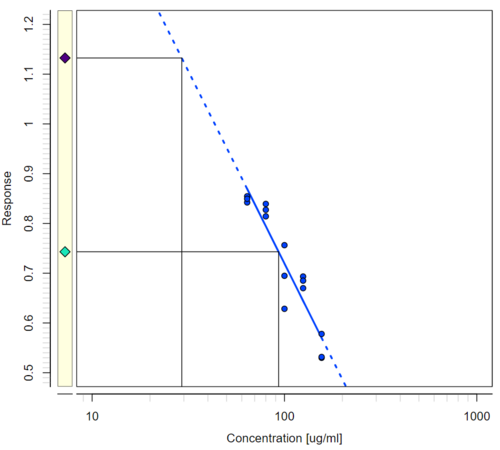-
PLA 3.0
- PLA 3.0 Virtual booth
- ---
- Explore PLA 3.0
- Compliance features
- Deployment
- ---
-
Experiments
- Parallel-line potency assays
- Parallel logistic potency assays (3PL, 4PL, 5PL)
- Slope ratio potency assays
- Quantal response potency assays
- Interpolation analysis
- Effective-concentration calculation (ECn)
- Spike-and-recovery analysis
- Cylinder-plate assays
- Turbidimetric assays
- ---
- Analyze the endotoxin concentration in a substance
- Import your data
-
Analyze your data with PLA 3.0
- Analyze Biological Potency Assays
- Analyze quantal response assays
- Analyze the dose-response relationship
- Analyze the endotoxin concentration in a substance
- Develop Equivalence margins
- Determine the potency of antibiotics
- Perform a curve comparisons
- Perform a Linearity-of-dilution assessment
- Perform a sophisticated statistical process control
- Perform combination calculations
- Advanced analysis
- Monitoring
- Supporting add-ons
- ---
- Event Calendar
- News
- Newsletter
- Get started
- Downloads
- Company
Turbidimetric assays
Turbidimetric assays are used to determine the influence of an antibiotic on the growth rate of a target microorganism in a specific medium. All components are added to a tube. Then, the inhibition of growth of the microorganism due to the antibiotic is measured by the turbidity of the solution.
Potency estimation of a Test and Control sample in a turbidimetric assay
The following image shows the potency estimation of a Test and Control sample in a turbidimetric assay: Every rack contains the five concentration steps of the Standard (S1, S2, S3, S4, S5), and the Test (U3) and Control (CTL1) sample. Potency values of Test and Control Sample are interpolated based on the Reference step (S3).
Example of a Sample Reports
-
Example report for a turbidimetric assay as recommended by JP chapter 4.02 with PLA 3.0 54 KB
Example turbidimetric assay based on JP 4.02: Gramicidin is used as antibiotic substance on the test organism Enterococcus hirae. The standard consists of five concentration steps (S1 to S5) with S3 being used as reference. The relative potency of the unkown sample TST1 is estimated based on the standard. The test system includes tests on the combined standard deviation of the standard, the coefficient of determination (r^2), and the relative potency. -
Example report for a turbidimetric assay as recommended by USP <81> with PLA 3.0 47 KB
Example turbidimetric assay based on USP <81>: Capreomycin is used as antibiotic substance on the test organism Klebsiella pneumoniae. The standard consists of five concentration steps (S1 to S5) with S3 being used as reference. The relative potency of the unkown sample U3 is estimated based on the standard. The control sample CTL1 contains the test diluent but no antibiotic. Note that the interpolated concentration value of CTL1 is beyond the regression line and therefore does not allow any conclusion about the true estimate (e.g. nonlinear trend for high response values). In accordance with USP <81>, the test system includes tests on the combined standard deviation of the standard, the coefficient of determination (r^2), and the relative potency. For a direct comparison, the response values are taken from USP <81>. Moreover, the concentration is log10-transformed as recommended by USP <81>.

